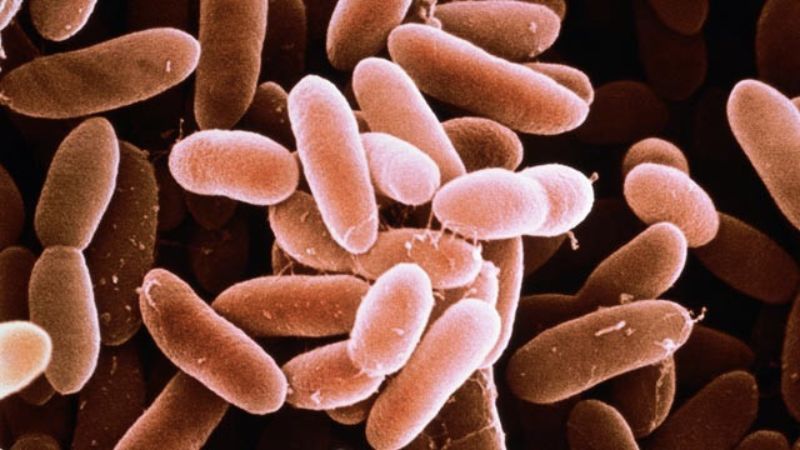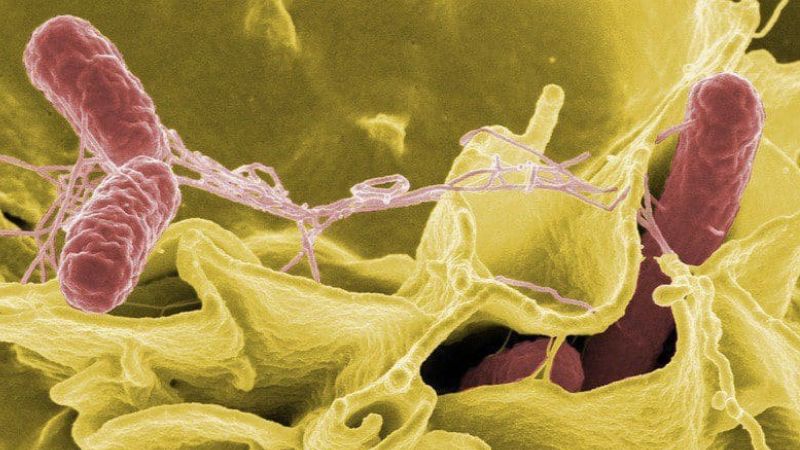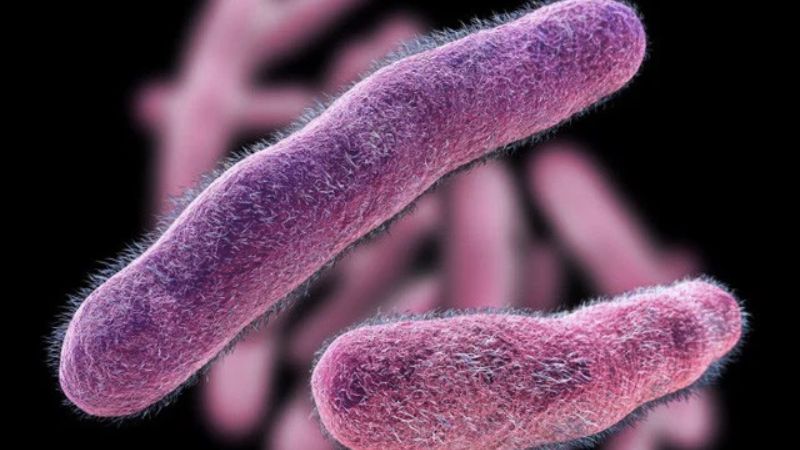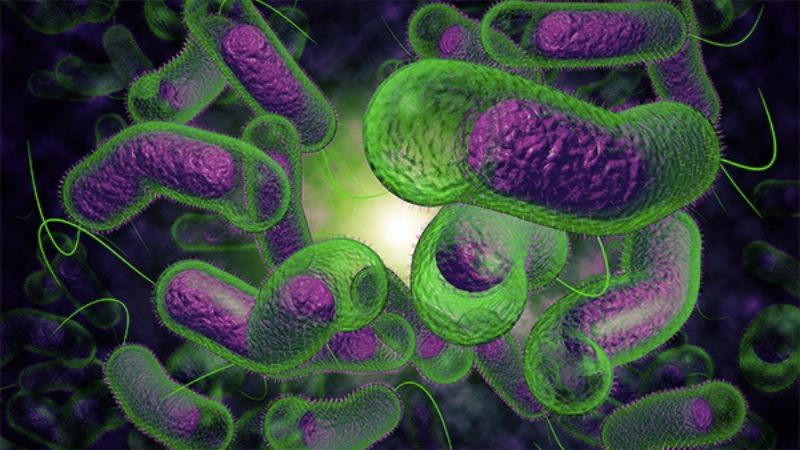You are viewing the article 4 dangerous bacteria that grow easily in the refrigerator to watch out for at Tnhelearning.edu.vn you can quickly access the necessary information in the table of contents of the article below.
Refrigerators are commonly considered as safe havens for storing our perishable food items, as they help in maintaining low temperatures that inhibit bacterial growth. However, it is important to note that while refrigeration indeed slows down bacterial multiplication, there are certain dangerous bacteria that can still thrive and multiply even in the cold conditions of our fridges. In this article, we will explore four of the most concerning bacteria that tend to grow easily in refrigerators, posing risks to our health. By gaining a better understanding of these bacteria and the food items they are commonly associated with, we can take necessary precautions to prevent their growth and thereby protect ourselves and our loved ones.
Refrigerators help preserve food and prevent the growth of harmful bacteria. If not cleaned and used properly, the refrigerator can become a favorable environment for bacteria to grow. Here are 4 types of bacteria to watch out for, they can spread and live in the refrigerator.
4 dangerous bacteria that easily grow in the refrigerator
Listeria monocytogenes bacteria
Listeria monocytogenes is a toxic food-borne bacteria that has the ability to grow at low temperatures and in environments with or without oxygen. The risk of Listeria infection occurs when consuming contaminated foods, such as improperly prepared deli meats or unpasteurized milk, and when contaminated foods are stored in the refrigerator.
 Listeria monocytogenes bacteria
Listeria monocytogenes bacteria
Symptoms of Listeria infection include muscle pain, fever, chills, nausea, and diarrhea. The duration of symptoms can range from a few days to more than 30 days .
Most cases of Listeria infection have mild symptoms. However, serious complications such as blood infection and meningitis can occur. High-risk groups include pregnant women (which can cause miscarriage or premature birth), the elderly (over 65), and people with weakened immune systems.
Salmonella bacteria
Salmonella lives in the intestines of animals and humans and is spread through contaminated water and food . Pollution sources include chicken meat , meat, eggshells and other materials.
 Salmonella bacteria
Salmonella bacteria
Salmonella can survive in the refrigerator for 2-3 months. Symptoms of Salmonella infection include diarrhea, abdominal pain, fever, nausea, and vomiting. The Salmonella strain can also cause infections in the urine, blood, bones, joints and nervous system, with the risk of serious complications.
Shigella bacteria
 Shigella bacteria
Shigella bacteria
Shigella bacteria are spread through contaminated water and food or by contact with feces. This bacteria causes intestinal irritation and the main symptoms are diarrhea, abdominal cramps, nausea and vomiting .
Symptoms appear 1-2 days after exposure and last from 5-7 days. May cause complications such as arthritis, sepsis, convulsions and hemolytic-uremic syndrome.
Vibrio bacteria
 Vibrio bacteria
Vibrio bacteria
Vibrio bacteria live in coastal waters, especially Vibrio parahaemolyticus causing disease most commonly. Mainly exists in seafood such as oysters, shrimp, fish, crab…
Bacterial infection caused by eating raw seafood causes abdominal pain, diarrhea, vomiting, fever, abdominal cramps, headache and bloody stools . Most mild cases of Vibrio will clear up on their own within 3 days, but not paying attention and getting the wrong treatment can lead to dangerous complications.
How to prevent food poisoning from the refrigerator
To limit bacterial growth and food poisoning, follow these guidelines for refrigerators:
- Clean the refrigerator regularly, wiping up spills immediately and cleaning surfaces thoroughly with detergent, then rinse.
- Cover food with cling film (for cooked foods) or seal in airtight containers (for seafood and raw meat).
- Sort food properly, separate raw vegetables, raw meat, fruit and cooked food. This will prevent the spread of bacteria from one food to another.
- Throw away perishable and expired foods, do not leave them in the refrigerator for too long. Cooked foods should be kept in the refrigerator for no more than 4 days, and raw poultry and ground meat should be kept for no more than 1-2 days.
- Check and adjust the refrigerator temperature to the right level. The freezer compartment temperature should be below 0 degrees Celsius, the cooler compartment should be below 5 degrees Celsius.
 How to prevent food poisoning from the refrigerator
How to prevent food poisoning from the refrigerator
Above is information about 4 types of dangerous bacteria that easily grow in the refrigerator that you need to be aware of. Hopefully the knowledge that Tnhelearning.edu.vn shares can help you protect your health and that of your family.
Source: phupuvietnam.vn
Tnhelearning.edu.vn
In conclusion, it is crucial to be aware of the four dangerous bacteria that have the potential to grow easily in refrigerators. These bacteria, namely Salmonella, E. coli, Listeria, and Staphylococcus aureus, pose significant health risks if consumed. Taking preventive measures, such as maintaining proper refrigeration temperatures, separating raw and cooked foods, practicing good hygiene, and regularly cleaning the refrigerator, can greatly reduce the risk of bacterial contamination. By staying informed and vigilant, we can ensure the safety of ourselves and our loved ones and protect against the harmful effects of these bacteria.
Thank you for reading this post 4 dangerous bacteria that grow easily in the refrigerator to watch out for at Tnhelearning.edu.vn You can comment, see more related articles below and hope to help you with interesting information.
Related Search:
1. List of harmful bacteria that thrive in refrigerated environments
2. How to properly clean and sanitize your refrigerator to prevent bacterial growth
3. Symptoms and health risks associated with consuming food contaminated with dangerous refrigerator bacteria
4. Common sources of bacterial contamination in refrigerated foods
5. Proper temperature settings to inhibit the growth of dangerous bacteria in the refrigerator
6. Steps to safely handle and store raw meats to prevent bacterial contamination in the fridge
7. Signs of spoilage caused by bacterial growth in refrigerated foods
8. The importance of regularly cleaning refrigerator shelves, drawers, and door seals to reduce bacterial risks
9. Can dangerous bacteria in the fridge spread to other foods?
10. Guidelines for safely defrosting food in the refrigerator to avoid bacterial growth.

